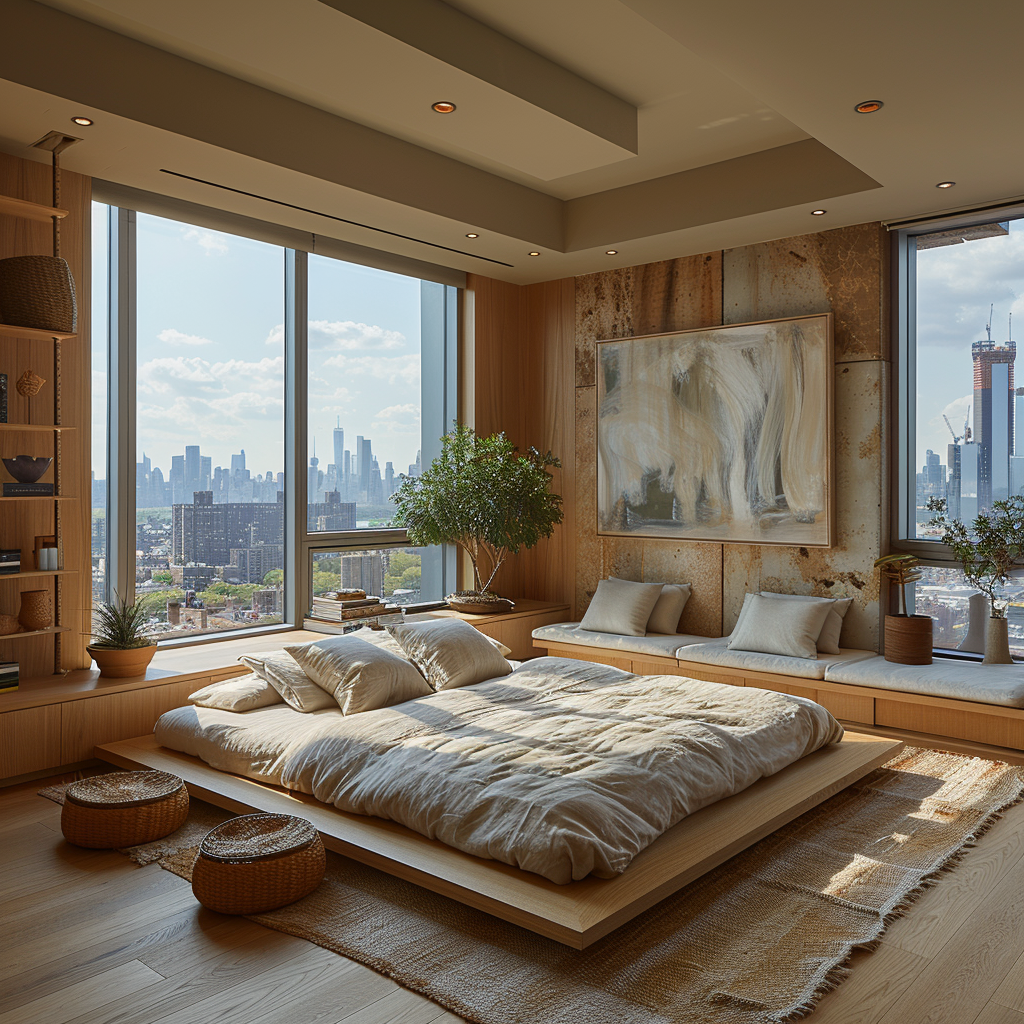In recent years, the trend towards eco-friendly and sustainable living has surged, with Scandinavian and Japandi styles leading the charge in the world of interior design. These styles, celebrated for their core values of simplicity, functionality, and a profound connection to nature, offer more than just aesthetic appeal; they represent a lifestyle that's mindful of our environmental footprint. The Scandinavian style, with its clean lines, natural light, and neutral color palettes, emphasizes a minimalist approach that reduces clutter and focuses on sustainable quality. Japandi, a fusion of Japanese and Scandinavian design principles, marries the Japanese respect for nature and the Scandinavian knack for comfort and functionality, creating spaces that are both serene and environmentally conscious.
This rising trend is not just a nod to stylish interiors but a reflection of a growing awareness and commitment to sustainable living. By incorporating materials like bamboo, reclaimed wood, and organic cotton, these styles embody an eco-friendly ethos that aligns with contemporary concerns about the environment. Moreover, the emphasis on functionality and simplicity encourages a more intentional way of living, where every piece has a purpose, and every design choice considers its ecological impact.

As we navigate towards a future where sustainability is increasingly paramount, the appeal of Scandinavian and Japandi styles offers a blueprint for creating chic, eco-friendly spaces that don't compromise on style or comfort. This movement towards sustainable living, inspired by the timeless elegance and underlying environmental principles of these design styles, invites us to rethink how our interior choices can reflect a deeper respect for the planet. It's an invitation to blend the beauty of design with the ethics of sustainability, creating homes that are not only visually appealing but also embodiments of eco-conscious living.
The Philosophy Behind Scandavadia and Japandi
The Scandinavian and Japandi design philosophies, though geographically distant, share a profound connection through their mutual appreciation for sustainability, minimal environmental impact, and mindful consumption. At the heart of Scandinavian design lies a deep-rooted ethos of simplicity, functionality, and the use of light and space to create warm and inviting interiors. Originating in the Nordic countries in the early 20th century, this design philosophy emphasizes the importance of creating spaces that are not only aesthetically pleasing but also practical and sustainable. The hallmark of Scandinavian design is its use of renewable resources and natural materials such as wood, wool, and linen, reflecting a longstanding tradition of environmental consciousness and a deep connection to the natural world.

Japandi, a harmonious blend of Japanese and Scandinavian design principles, emerged more recently as a distinct style that combines the Japanese concept of 'wabi-sabi' (finding beauty in imperfection) with the Scandinavian emphasis on minimalism and functionality. Japandi interiors are characterized by a muted color palette, clean lines, and an emphasis on craftsmanship and quality. This design philosophy also prioritizes the use of sustainable materials, advocating for furnishings and decor that are both eco-friendly and durable. The use of natural materials like bamboo, paper, and organic fabrics in Japandi interiors not only minimizes the environmental footprint but also adds a tactile, serene quality to the space.
Both Scandinavian and Japandi philosophies champion the idea of mindful consumption, encouraging a lifestyle that values quality over quantity and considers the longevity and environmental impact of each item. This approach to interior design fosters a more sustainable way of living, where every element of the decor is chosen with intention and care. By prioritizing renewable resources and natural materials, these design styles offer a blueprint for creating beautiful, functional spaces that align with a more conscious and eco-friendly way of life. In doing so, Scandinavian and Japandi designs serve as a reminder of the importance of sustainability in our daily lives, encouraging us to make choices that benefit both our personal well-being and the health of our planet.
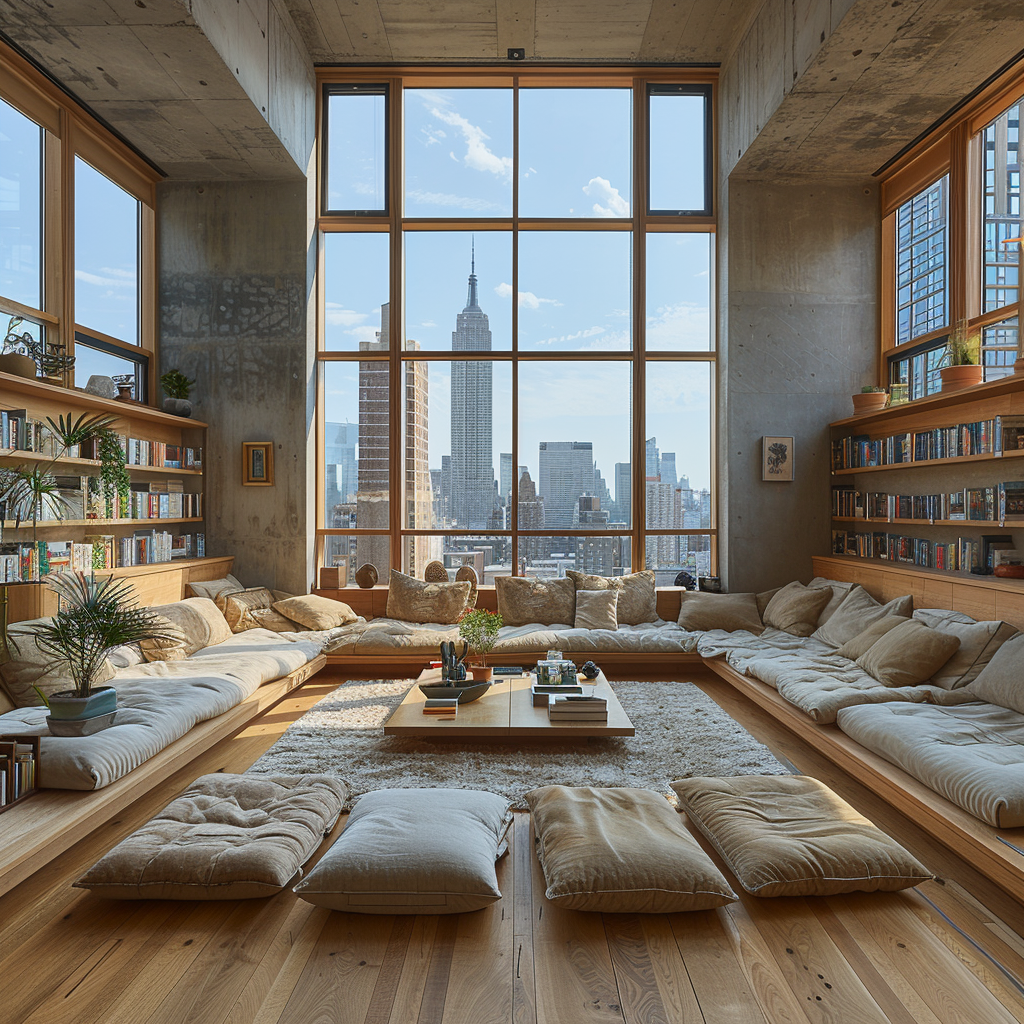
Modern Sustainability: Trends and Materials
The realm of sustainable interior design is rapidly evolving, with innovative materials and eco-friendly practices taking center stage. As environmental awareness grows, top interior designers are pioneering the integration of green trends into modern homes, ensuring that style and sustainability go hand in hand. These forward-thinking professionals are not just following trends; they're setting them, creating interiors that are as kind to the planet as they are aesthetically pleasing.
One of the most exciting trends in sustainable design is the use of reclaimed and recycled materials. From flooring made of reclaimed wood to countertops fashioned from recycled glass, these materials bring unique stories and textures into homes, reducing waste and conserving resources. Another innovative material gaining popularity is bamboo. Known for its rapid growth and versatility, bamboo is being used for everything from cabinetry to textiles, offering a durable and sustainable alternative to traditional hardwoods.

In addition to these materials, top designers are increasingly turning to non-toxic paints and finishes, which improve indoor air quality and reduce environmental impact. These products, free from volatile organic compounds (VOCs), are safer for both the home's inhabitants and the environment, marking a significant shift away from traditional, chemical-laden options.
Sustainable design is also seeing a rise in energy-efficient solutions, such as LED lighting and eco-friendly appliances, which not only reduce a home's carbon footprint but also offer long-term savings on energy bills. Solar panels and green roofs are becoming more common in residential settings, further demonstrating how sustainability can be seamlessly integrated into the fabric of modern living.

Beyond these material and technological innovations, there's a growing emphasis on biophilic design, which seeks to strengthen the connection between humans and nature. Incorporating natural elements like plants, water features, and maximizing natural light not only enhances the aesthetics of a space but also promotes well-being and reduces stress.
Top interior designers are at the forefront of this sustainable revolution, crafting spaces that embody the principles of eco-friendly living without sacrificing comfort or style. By embracing sustainable interior design trends and materials, they're creating modern homes that are not only visually stunning but also thoughtful reflections of an increasingly eco-conscious world. This movement towards sustainable design is more than just a trend; it's a testament to the industry's commitment to a healthier, more sustainable future.

Integrating Hestya's Solutions for Sustainable Chic
In the dynamic world of interior design, a growing trend emphasizes the fusion of eco-friendly practices with the elegant simplicity of Scandavadia and Japandi aesthetics. This movement reflects a broader shift towards sustainable living, where the beauty of minimalist design meets a deep commitment to environmental responsibility. It's a fact that more homeowners and designers alike are seeking ways to incorporate sustainable materials and practices into their homes, aligning with the global push towards reducing our ecological footprint. The popularity of using reclaimed wood, bamboo, and recycled metals in furniture design is not just a trend but a response to the need for more sustainable lifestyle choices. These materials, celebrated for their durability and timeless beauty, offer an antidote to the disposable culture that has long dominated the furniture industry.

The demand for interior design solutions that embrace this eco-conscious ethos has led to the adoption of innovative technologies that streamline the design process, ensuring precision and minimizing waste. By employing advanced techniques for virtual space visualization and precise measurement, modern design practices are achieving a level of efficiency that significantly reduces the excess typical of traditional manufacturing. This approach not only guarantees a perfect fit for custom-made pieces but also aligns with the principles of mindful consumption and sustainability.
As we navigate through pages that delve deeper into creating spaces that reflect the serene, nature-inspired essence of Scandavadia and Japandi styles, we find inspiration in the blend of functionality and aesthetic simplicity. These design philosophies, rooted in the values of sustainable living and minimal environmental impact, offer a blueprint for transforming our living environments into chic, eco-friendly sanctuaries. Keep reading to discover how you can bring these principles into your home, crafting a space that is both stylish and kind to the planet, and join the movement towards a more sustainable and mindful way of living.
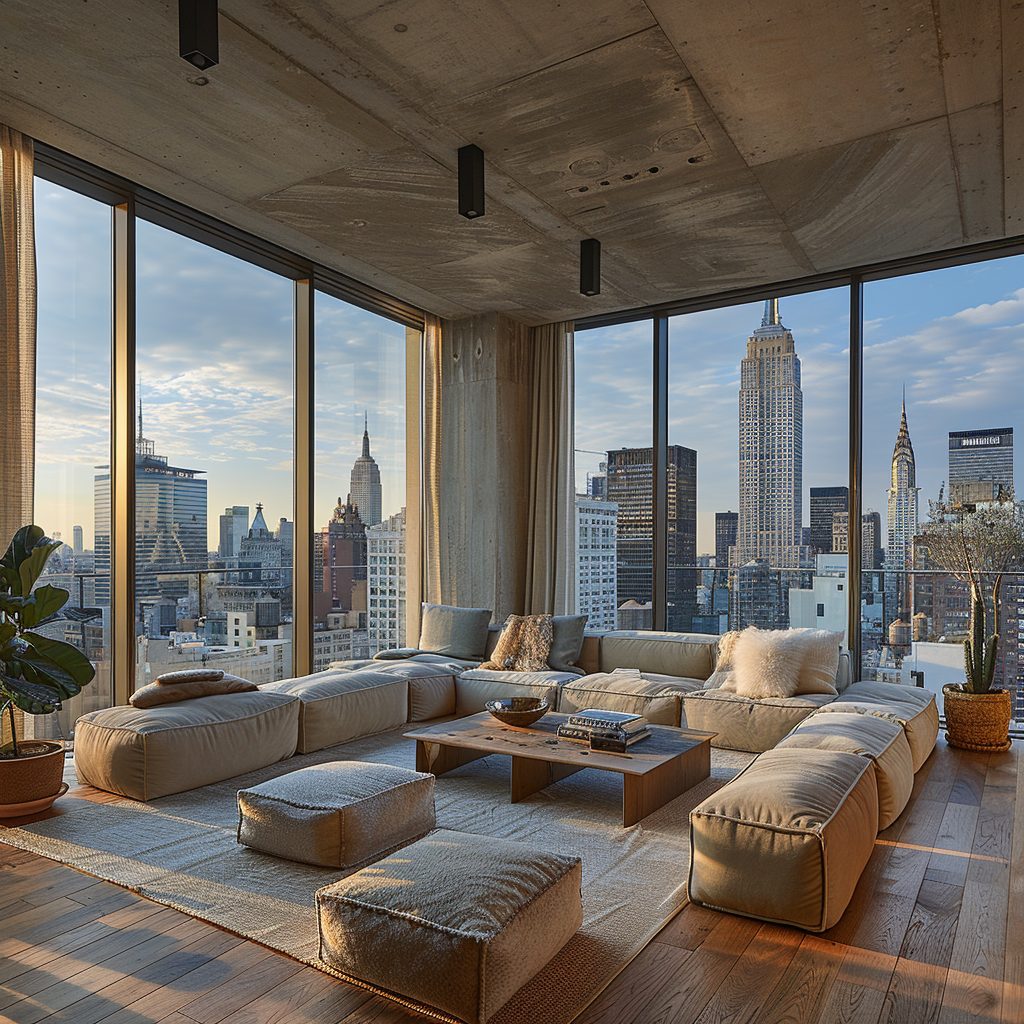
Designing Your Eco-Friendly Space
Designing an eco-friendly space that resonates with the serene aesthetics of Scandavadia and Japandi styles is a rewarding journey towards creating a home that is not only chic but also kind to the planet. Here are some practical tips to guide you in crafting your own environmentally friendly haven, drawing inspiration from the principles that underpin Hestya’s sustainable design ethos.
Prioritize Sustainable Materials: Begin by choosing materials that have a low environmental impact. Look for furniture and decor made from natural, renewable resources such as bamboo, cork, and certified sustainable wood. These materials not only reflect the minimalist beauty of Scandavadia and Japandi designs but also ensure that your home decor is in harmony with the environment.
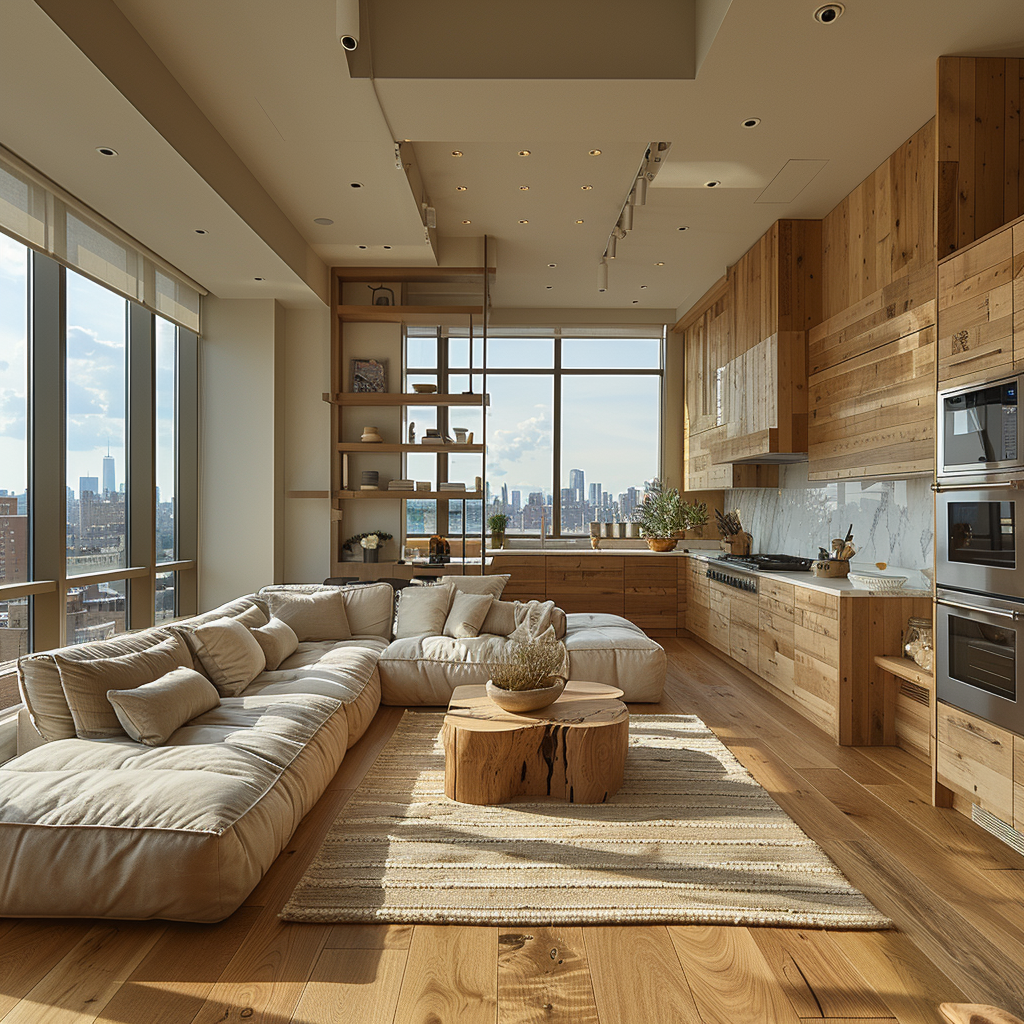
Opt for Quality and Durability: In the spirit of sustainable living, select furniture that is built to last. Investing in high-quality pieces may have a higher upfront cost, but it reduces the need for frequent replacements, thereby minimizing waste. Hestya’s custom-made furniture, for example, combines timeless design with durability, embodying the idea that good design is sustainable design.
Embrace Natural Light and Energy Efficiency: Maximize the use of natural light in your home to reduce the reliance on artificial lighting. When artificial lighting is necessary, choose LED bulbs for their energy efficiency and longer lifespan. This not only aligns with eco-friendly principles but also enhances the natural, airy feel characteristic of Scandavadia and Japandi interiors.
Incorporate Plants and Greenery: Adding plants to your space is a simple yet effective way to bring nature indoors, improving air quality and adding a lively touch to your decor. Plants are a staple in both Scandavadia and Japandi styles, symbolizing the connection to nature that is central to these aesthetics.
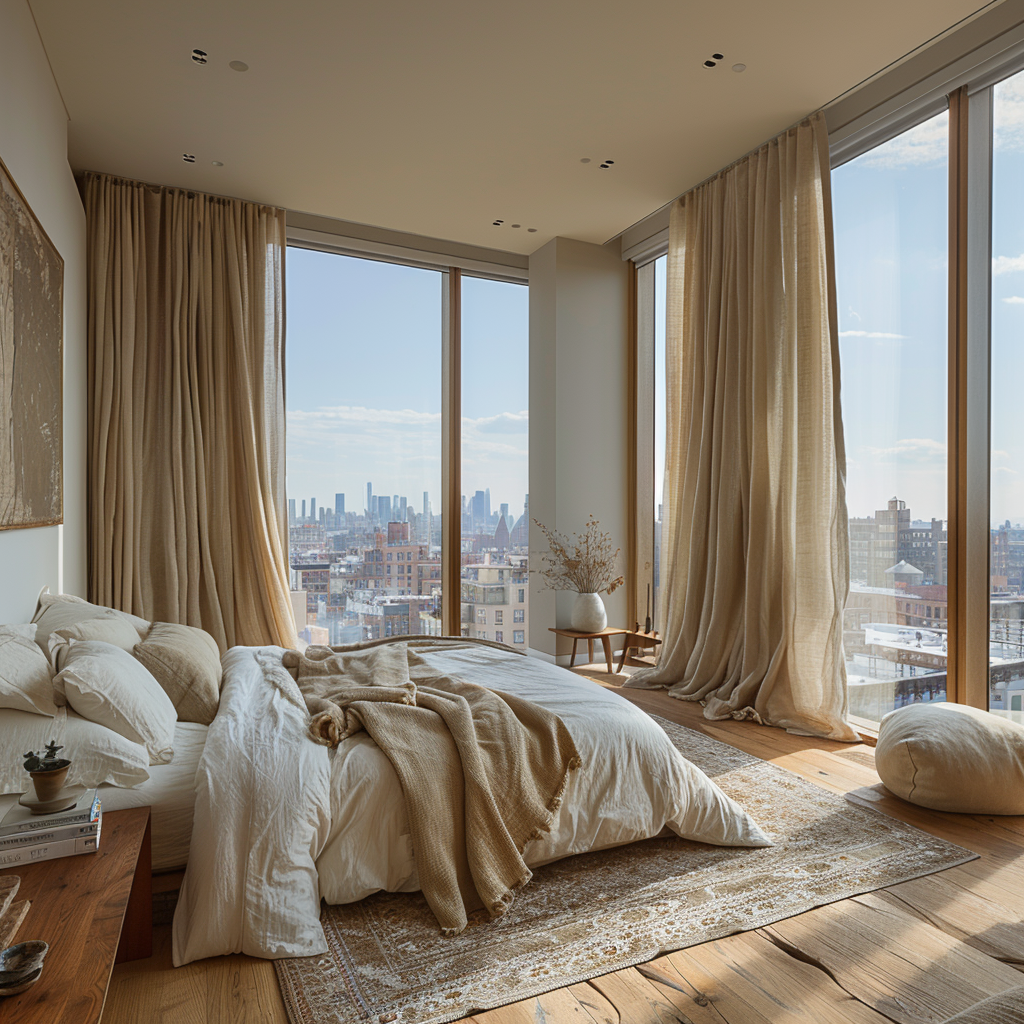
Use Eco-Friendly Paints and Finishes: Opt for paints and finishes that are low in volatile organic compounds (VOCs). These eco-friendly options contribute to better indoor air quality and are safer for both the environment and your health.
Decorate with Second-Hand and Vintage Finds: Embracing the beauty of pre-loved items not only adds unique character to your space but also supports the idea of mindful consumption. Vintage pieces can often be repurposed or updated to fit the minimalist aesthetic of Scandavadia and Japandi designs, offering a sustainable alternative to new items.
Reduce, Reuse, Recycle: Apply the principles of reducing waste, reusing where possible, and recycling materials to every aspect of your interior design project. This approach minimizes the environmental footprint of your decor choices and supports a more sustainable lifestyle.
By adopting these eco-friendly design tips, inspired by Hestya's approach to sustainable home decor, you can create a space that reflects the elegance and simplicity of Scandavadia and Japandi styles while also prioritizing the well-being of the planet.
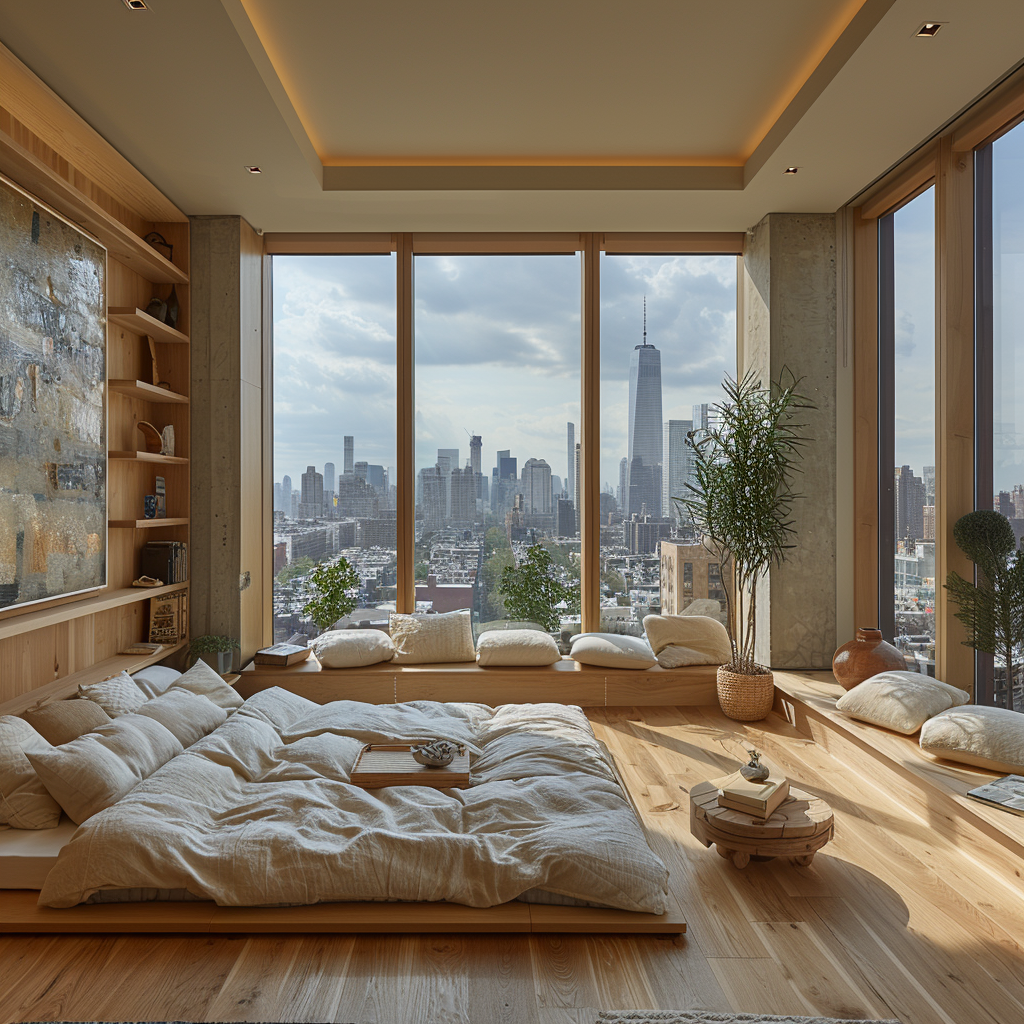
Embracing sustainable living and eco-friendly interior design is more than a trend; it's a commitment to creating spaces that not only bring beauty and serenity into our lives but also contribute to the well-being of our planet. Hestya’s innovative solutions, grounded in the principles of Scandavadia and Japandi styles, offer homeowners a pathway to transform their living environments into models of sustainability and mindful design. By prioritizing the use of natural, renewable materials, and integrating technology that reduces waste, Hestya makes it easier for individuals to adopt eco-friendly practices in their homes. In doing so, we not only enhance our own living spaces but also take a meaningful step towards a healthier, more sustainable world. Embracing Hestya’s approach to design, we can all contribute to the collective effort of preserving our planet for future generations, proving that style and sustainability can indeed go hand in hand.
